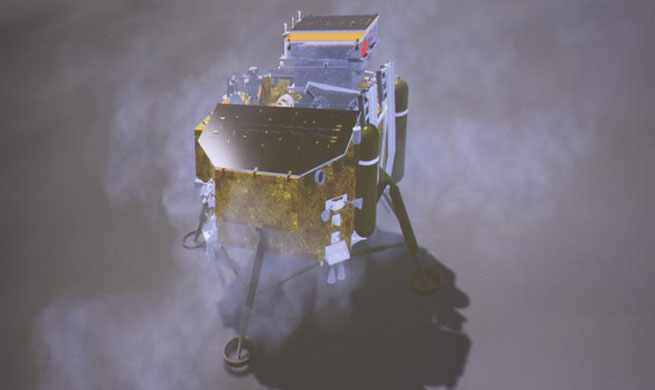SHENZHEN, Jan. 3 (Xinhua) -- Zhao Yeyun suffers from lower-body paralysis and has been living with the help of wearable exoskeleton robots, although he cannot afford them.
A car accident damaged his spinal cord nine years ago. A year after his hospitalization, he was able to stand with the help of the first model of a wearable exoskeleton robot developed by Wu Xinyu and his research team in the Center for Intelligent and Biomimetic Systems under the Shenzhen Institute of Advanced Technology of the Chinese Academy of Sciences.
Since then, he has become a volunteer for testing the exoskeleton robots developed by the team based in the southern China city of Shenzhen.
Wu, the executive director of the center, has led the team to develop four types of exoskeleton robots with six different models, which have 38 national patents.
"The algorithm of the robot system controls sensors to read the wearer's movement intentions and send commands to the drive system. The bionic shape design of lower limb prosthesis is in accordance with the characteristics of the wearer's skeleton and joints," said Xu.
Volunteers like Zhao provide details on the effects of the robots.
With the assistance of an exoskeleton robot, Zhao can stand, walk and sit down on his own.
Zhao said the first time he tried on the robotic legs, they did not work. "The robotic legs are so heavy that I could not straighten up or lift my feet high enough," Zhao said.
Based on feedback from volunteers, the research team improved and updated the exoskeleton robot's physical design and control algorithm over and over again.
"In order to decrease the robot's weight, we use alloy and carbon fiber as a substitute material for steel," said Wu.
The weight of the robot models has declined from 25kg to 14kg.
He said that apart from being used in rehabilitation and medical treatment, exoskeleton robots can provide increased strength, security and working efficiency for workers in heavy machinery industries.
The team has developed a light flexible exoskeleton robot weighing 4 kg to enhance physical strength of wearers, and signed a letter of cooperative intent with the Commercial Aircraft Corp. of China Ltd. and the Hong Kong International Airport. "The exoskeleton robots help workers save energy and avoid muscle fatigue. In the future, we plan to develop wearable robots that can assist human beings in climbing, hiking and other activities," said Wu.
Zhao, from southwest China's Guangxi Zhuang Autonomous Region, said he could not afford such a robot priced at about 200,000 yuan (29,000 U.S. dollars) or more.
"I hope this technology can be industrialized as soon as possible, as mass production can make the robots more affordable," he said.
As one of the world's largest emerging markets of robotics, China has launched a development plan for the robot industry from 2016 to 2020, which encourages the mass production and application of service robots in rehabilitation, clinic treatment and other fields.
According to the International Federation of Robotics, China installed around 138,000 industrial robots last year, accounting for one-third of the global market and representing a 58-percent growth rate year on year. Robot sales are expected to reach 150,000 units in 2018.
Wu said a number of the world's most prestigious universities and institutions have applied to put their advancing robotics research into practice in China. The global market for exoskeleton robotics is estimated to exceed 1.8 billion U.S. dollars by 2020.

















